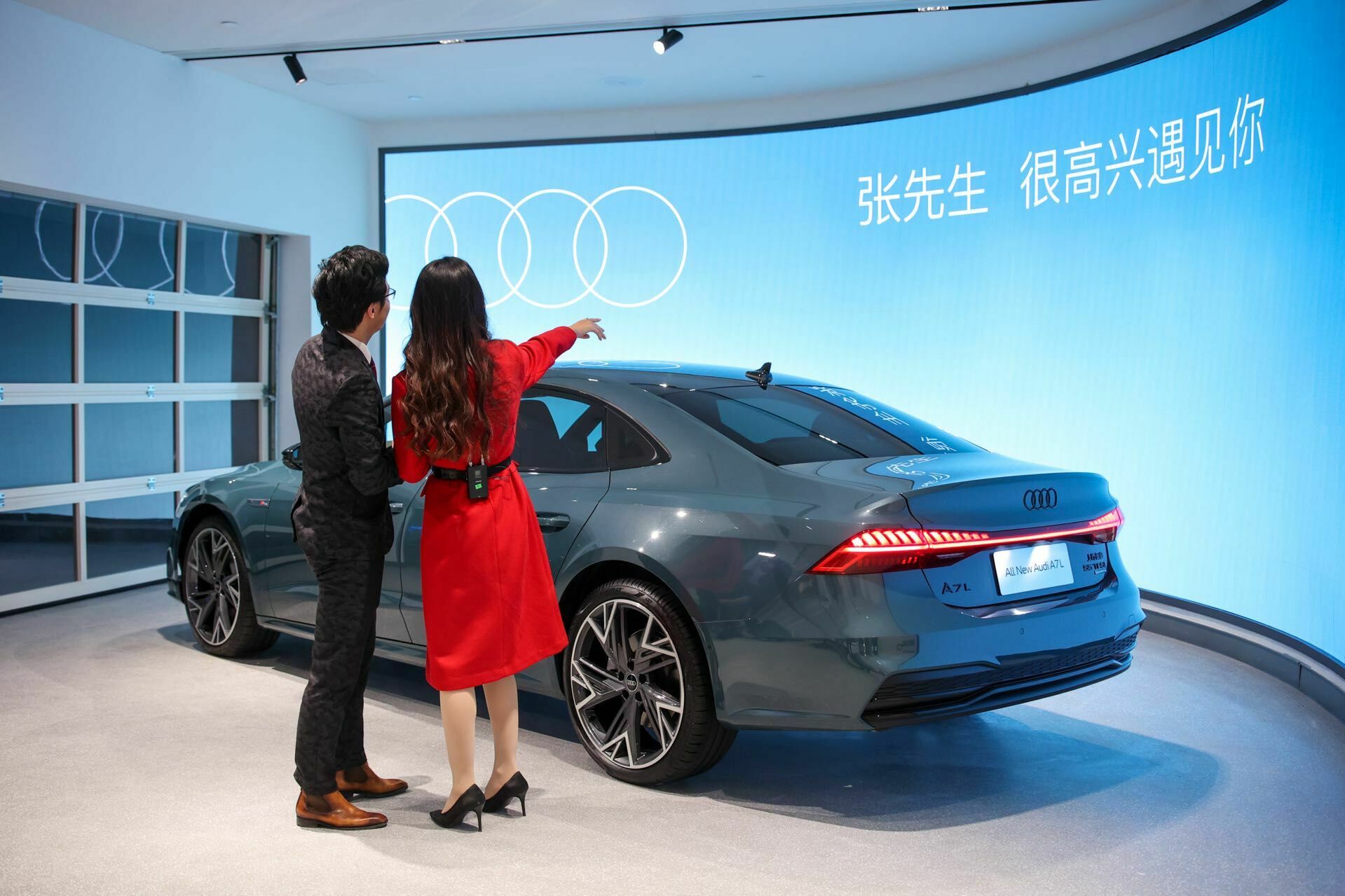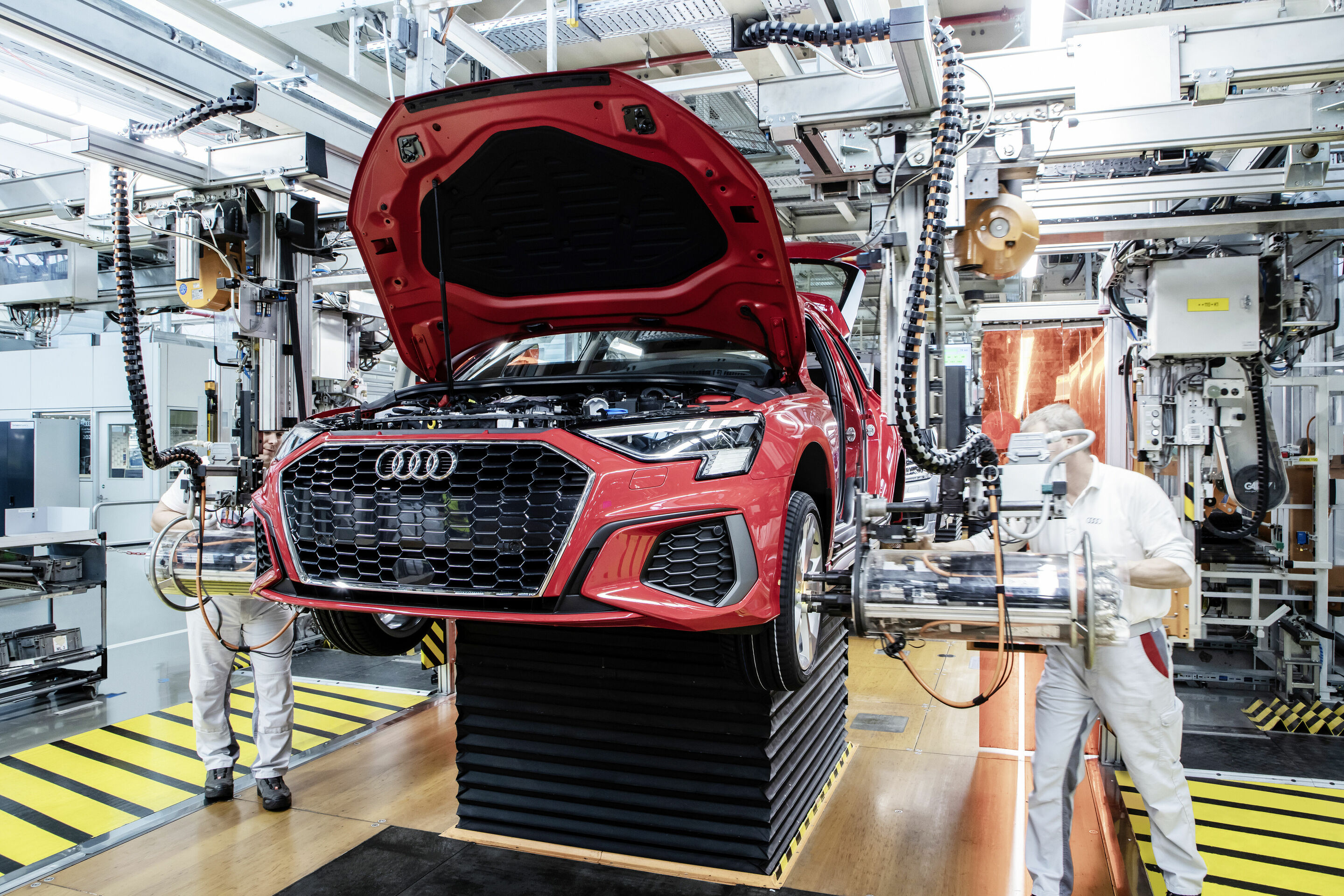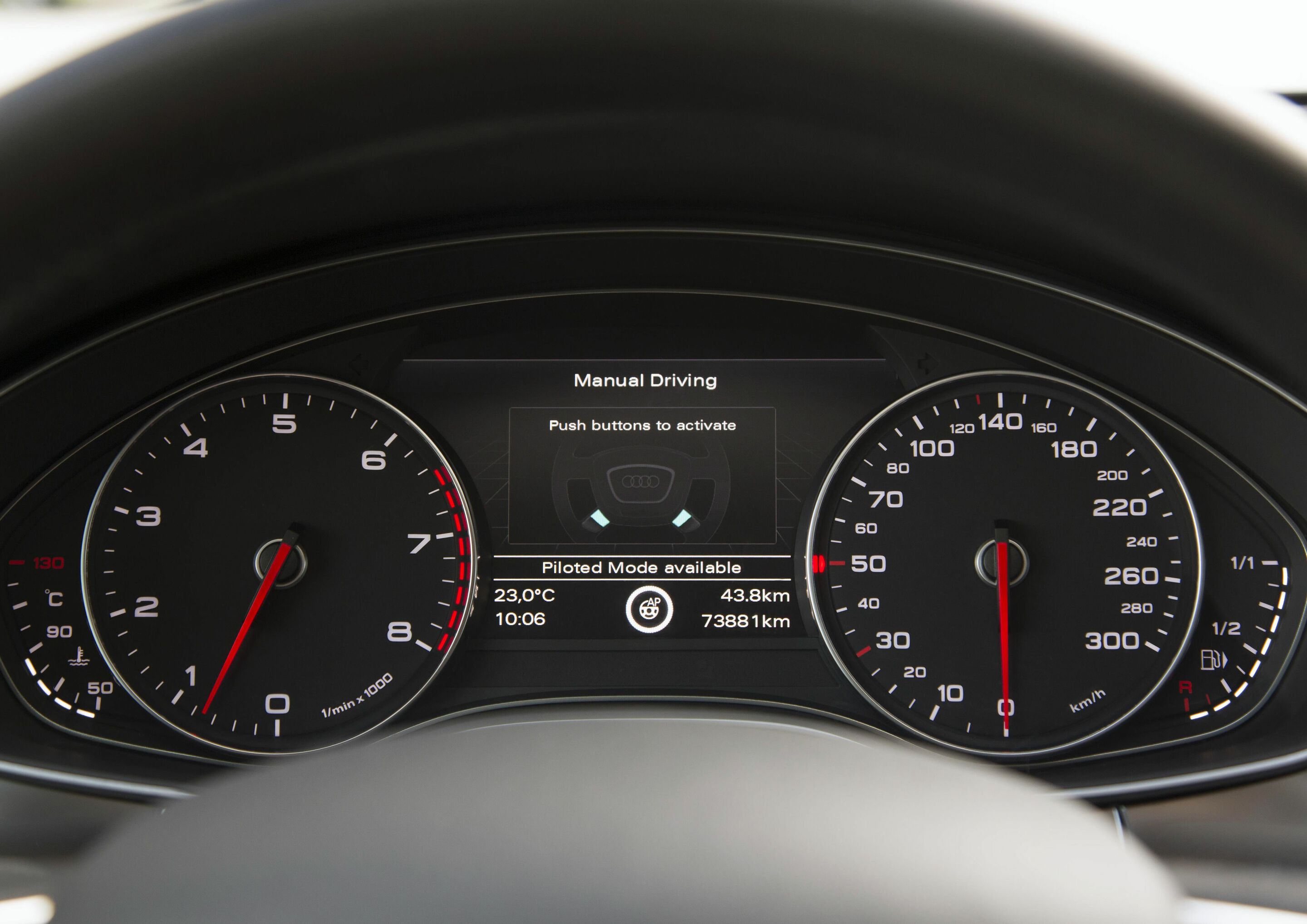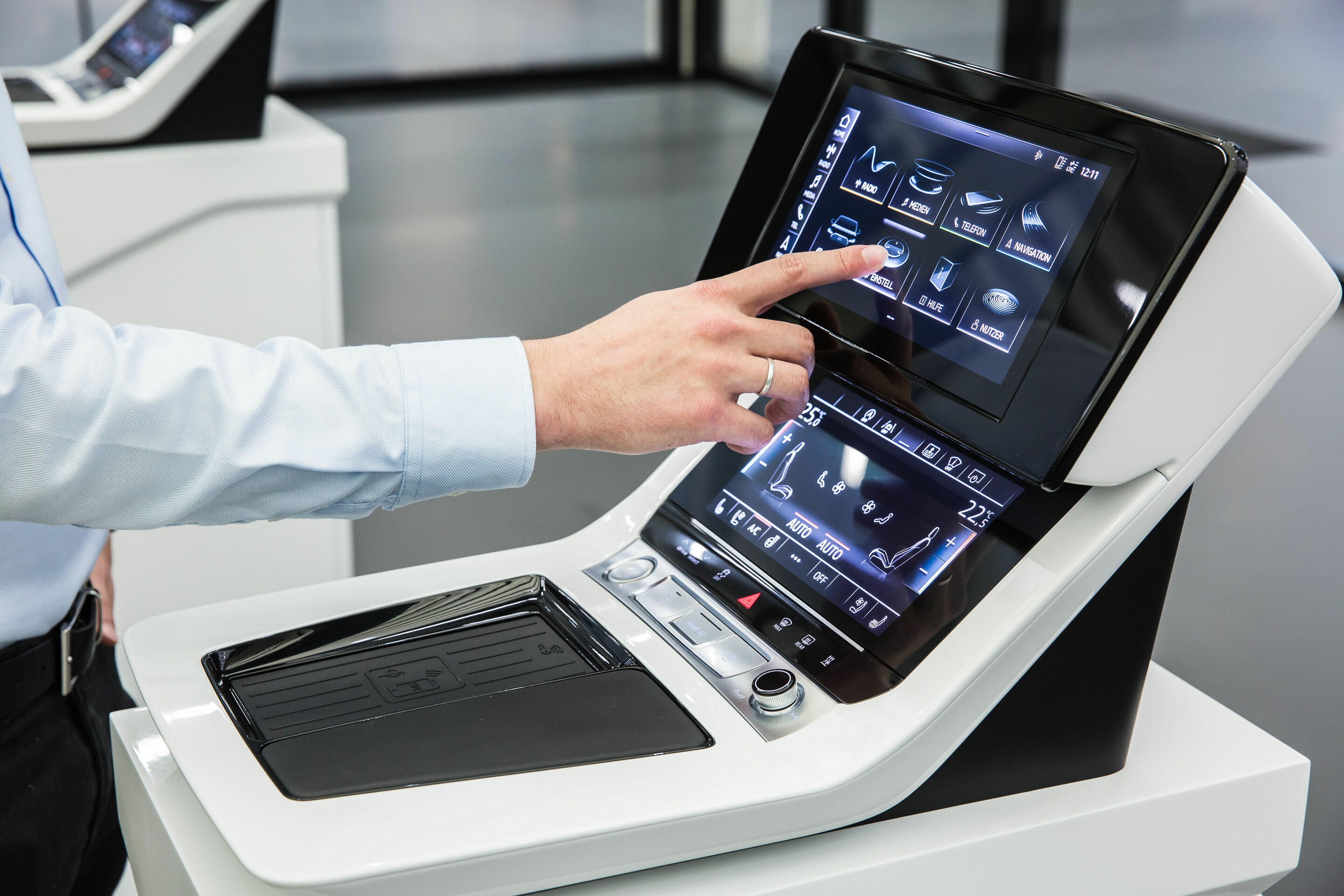Search
All search results for "A7"
(297)
 Audi A7 (until 2025)
Audi A7 (until 2025)
Audi A7 (until 2025)
Aesthetically athletic, emotion-packed design, sporty character and innovative technology: the Audi A7 marries the strengths of a Coupé with those of a Sedan and an Avant.
To the current Audi A6
Click here to get to the current models of the successor to the Audi A7, the Audi A6.
Audi Tradition
If you would like to know more about the Audi model history, please go to: Services of Audi Tradition You can also contact the experts of Audi Tradition directly at: audi.tradition@audi.de
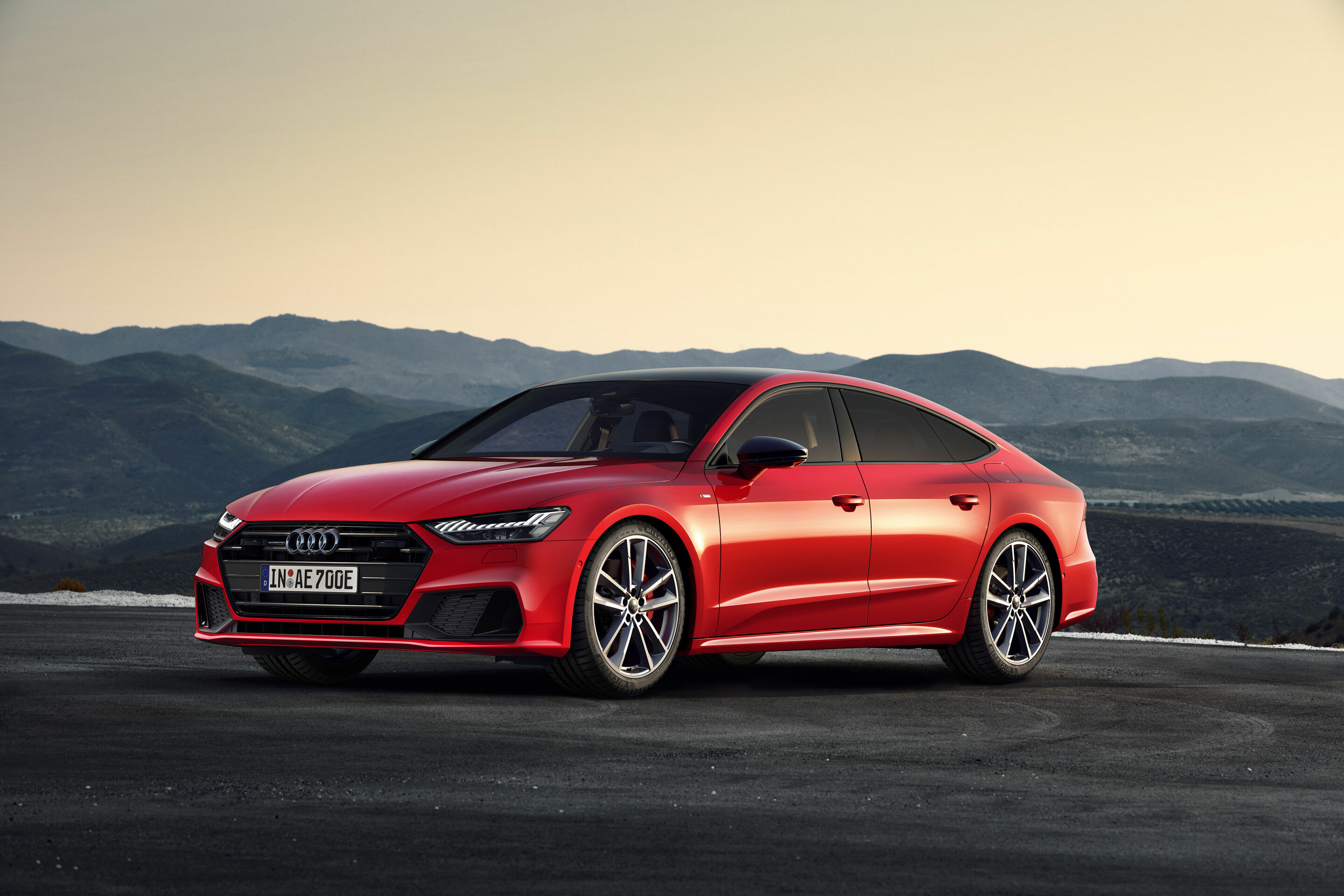
The new Audi A7 Sportback is a new style of Gran Turismo, offering systematic digitalization, a dynamic driving experience and a space concept that combines a wide range of customer requirements. The large four-door coupé is the essence of Audi’s new design language. Progressive sportiness: the exterior design The exterior design of the new A7 Sportback emphatically embodies Audi’s new, progressive design language focused on large surfaces, sharp edges and alternating light and shadows. The wide, low Singleframe grille and prominent air inlets express the dynamic character of the Gran Turismo at first glance. With the two optional headlight variants, twelve separate horizontal lighting strips create the lighting signature. Topping the line are the HD Matrix LED headlights with Audi laser light, which can be recognized by the blue marker in the reflector. Viewed from the side, pronounced contours emphasize the large wheels –a reference to Audi’s quattro genes. The sharply dropping roof line dominates the silhouette. The large coupé is 4.97 meters (16.3 ft) long and 1.91 meters (6.3 ft) wide, but just 1.42 meters (4.7 ft) high. Its rear is tapered like a yacht. A spoiler integrated into the long luggage compartment lid extends electrically at 120 km/h (74.6 mph). A light strip connects the rear lights, whose outer rear lights comprise 13 segments each. When the doors are unlocked or closed, dynamic lighting animations in the rear lights and headlights showcase the Audi A7. Reduction as a stylistic device: the interior design The design language in the interior of the new Audi A7 Sportback is reduced and clean. The horizontal lines and sleek instrument panel convey a feeling of airy spaciousness. The center console is inclined toward the driver and underscores the Gran Turismo’s sporty character. In the interior, the cockpit architecture and the MMI monitor merge to form a homogeneous surface.
 A7 Sportback (until 2025) 50 TFSI e quattro S tronic (195 kW / 220 kW)
A7 Sportback (until 2025) 50 TFSI e quattro S tronic (195 kW / 220 kW)
Program for Germany, Status: 02/05/25 1/3 Audi A7 Sportback 50 TFSI e quattro S tronic 195 kW / 220 kW Engine / electrics Engine type Inline 4-cylinder engine Valve gear / number of valves per cylinder Roller cam follower, continuous intake and exhaust camshaft adjustment, hydraulic valveplay compensation / 2/2 inlet/exhaust valves per cylinder Displacement in cc / bore x stroke in mm / compression 1984 / 82.5 x 92.8 / 9.6 Max. power output in kW (PS) / at rpm 195 (265) / 5250 - 6500 Max. torque in Nm (lb-ft) / at rpm 370 (272.9) / 1600 - 4500 Mixture preparation Direct injection, lambda control, knock control, turbocharger, intercooler Exhaust emission control Catalytic converter, oxygen sensor, gasoline particulate filter Emission standard Euro 6e Charging time AC 0-100%, 3ph 16A@230V in min 150 Max. charging capacity AC in kW 7.4 Max. electrical output at 12V in kW 3 On-board voltage 1 in volts 12 Voltage level of the HV battery in volts 400 Hybrid Battery type (high-voltage) / number of cells Lithium-ion / 104 Gross / net battery capacity in kWh 17.9 / 14.4 Max. system output in kW (PS) 220 (299) Continuous electrical output in kW 55 Total system torque output in Nm (lb-ft) 450 (331.9) Electrical torque output in Nm (lb-ft) 350 (258.1) Drivetrain / transmission Drive type quattro all-wheel drive with ultra technology Clutch Hydraulically actuated dual clutch (wet) Transmission type 7-speed S tronic Transmission ratio in 1st/2nd gear 3.188 / 2.190 Transmission ratio in 3rd/4th gear 1.517 / 1.057 Transmission ratio in 5th/6th gear 0.738 / 0.557 Transmission ratio in 7th/8th gear 0.433 / - Reverse gear ratio / final drive ratio 1-2 / 2-3 2.750 / 4.410 / - Suspension / steering / brakes Type and design of front-axle suspension 5-link front axle Type and design of rear-axle suspension 5-link rear axle Wheels (basic) // Tires (basic) Cast aluminum 8 J x 18 // 225 / 55 R 18 Steering Electromechanical progressive steering with speed-dependent power assistance Steering ratio
 A7 Sportback (until 2025) 55 TFSI e quattro S tronic (195 kW / 270 kW)
A7 Sportback (until 2025) 55 TFSI e quattro S tronic (195 kW / 270 kW)
Program for Germany, Status: 02/05/25 1/3 Audi A7 Sportback 55 TFSI e quattro S tronic 195 kW / 270 kW Engine / electrics Engine type Inline 4-cylinder engine Valve gear / number of valves per cylinder Roller cam follower, continuous intake and exhaust camshaft adjustment, hydraulic valveplay compensation / 2/2 inlet/exhaust valves per cylinder Displacement in cc / bore x stroke in mm / compression 1984 / 82.5 x 92.8 / 9.6 Max. power output in kW (PS) / at rpm 195 (265) / 5250 - 6500 Max. torque in Nm (lb-ft) / at rpm 370 (272.9) / 1600 - 4500 Mixture preparation Direct injection, lambda control, knock control, turbocharger, intercooler Exhaust emission control Catalytic converter, oxygen sensor, gasoline particulate filter Emission standard Euro 6e Charging time AC 0-100%, 3ph 16A@230V in min 150 Max. charging capacity AC in kW 7.4 Max. electrical output at 12V in kW 3 On-board voltage 1 in volts 12 Voltage level of the HV battery in volts 400 Hybrid Battery type (high-voltage) / number of cells Lithium-ion / 104 Gross / net battery capacity in kWh 17.9 / 14.4 Max. system output in kW (PS) 270 (367) Continuous electrical output in kW 55 Total system torque output in Nm (lb-ft) 500 (368.8) Electrical torque output in Nm (lb-ft) 350 (258.1) Drivetrain / transmission Drive type quattro all-wheel drive with ultra technology Clutch Hydraulically actuated dual clutch (wet) Transmission type 7-speed S tronic Transmission ratio in 1st/2nd gear 3.188 / 2.190 Transmission ratio in 3rd/4th gear 1.517 / 1.057 Transmission ratio in 5th/6th gear 0.738 / 0.557 Transmission ratio in 7th/8th gear 0.433 / - Reverse gear ratio / final drive ratio 1-2 / 2-3 2.750 / 4.410 / - Suspension / steering / brakes Type and design of front-axle suspension 5-link front axle Type and design of rear-axle suspension 5-link rear axle Wheels (basic) // Tires (basic) Cast aluminum flow forming 8.5 J x 19 // 245 / 45 R 19 Steering Electromechanical progressive steering with speed-dependent power assistance
 Efficiency – charging comfort – everyday usability: the plug-in hybrids from Audi
Efficiency – charging comfort – everyday usability: the plug-in hybrids from Audi
After the large A6, A7 Sportback, A8, and Q7 models, the offering became available to the compact class with the new A3 Sportback in the summer of 2020. The Audi Q8 followed in the fall. The Q3 and Q3 Sportback are the most recent plug-in hybrid models. The compact SUVs constitute the new entry into the world of electrified Q models. All current plug-in hybrid models from Audi carry the “TFSI e” abbreviation. Intelligent drive management system: driving modes and recuperation The first aspect of the target triangle in the development work for the PHEV models stands for a confident driving experience. The drive concept of the PHEVs provides great efficiency and high recuperation power. As a result, a large portion of everyday journeys can be covered on purely electric power and with zero local emissions. At low speeds, what is known as the Acoustic Vehicle Alert System generates the legally prescribed e‑sound. In “Auto Hybrid” mode, which is the main operating mode, the TFSI and the electric motor divide up the work intelligently and with maximum efficiency, using fully electric power at low speeds, predominantly the TFSI engine at higher speeds, and often a combination of the two. The electric motor provides support when accelerating or wherever there is a high load requirement. When the driver depresses the accelerator firmly, the interplay between the electric motor and the gasoline engine creates a powerful boost. When accelerating from low rotational speeds, for example, the electric motor bridges the tenths of a second that the turbocharger needs to build up pressure. When driving at consistent rotational speeds, it sometimes functions as an alternator, thereby shifting the load point of the TFSI to operating ranges with higher efficiency. The predictive operating strategy helps with consumption reduction and recuperation in driving operation.

The proportions of the new Audi A7 Sportback are an optimal basis for the new Audi design language in the luxury class. The interior also takes up the design language of the prologue studies, which relies on reduction as a stylistic device. The design conveys both sportiness and progressiveness. Exterior design Four numbers circumscribe the sporty character of the new Audi A7 Sportback. It is 4,969 millimeters (16.3 ft) long, has a wheelbase of 2,926 millimeters (9.6 ft) and is 1,908 millimeters (6.3 ft) wide, but just 1,422 millimeters (4.7 ft) high. In all dimensions, the differences to the previous model are just a few millimeters. The Singleframe grille of the new Audi A7 Sportback is wide and low-mounted. All adjacent surfaces and lines emanate from it. The side air inlets in the front skirt emphasize the Gran Turismo’s sporty character. Contours reminiscent of the front splitters on a racing touring car form the bottom edges of the two large inlets. Sharply tensioned lines and tautly curved surfaces characterize the side view of the A7 Sportback. The low-set shoulder line draws the visual focal point downward for more sportiness. The window line, which rises continuously towards the rear, conveys dynamics even when stationary. Powerful contours over the wheel arches further emphasize the sporty appearance. They are a feature of new design language, cite the “blisters” of the Audi Ur-quattro and reference the tradition of technology at Audi. The point of the third side window tapers upwards – a throwback to the Audi 100 Coupé S from 1970. Similar to the predecessor model, the rear of the new Audi A7 Sportback is tapered like a yacht. The rear end is about three centimeters (1.2 in) higher, further improving the aerodynamics. At a speed of 120 km/h (74.6 mph), a spoiler extends from the rear hatch.

The Audi A7 Sportback impresses with even more dynamic driving on the one hand and increased comfort on the other. Thanks to numerous chassis innovations, the Gran Turismo from Audi offers a new range between comfort and dynamics. The mild-hybrid technology, which is also new, makes the drive system even more efficient and at the same time more comfortable. Furthermore, the A7 will be hitting the road with updated engines. Chassis New chassis components enable the four-door Gran Turismo to perfect its synthesis of sportiness and long-distance comfort. The new Audi A7 Sportback handles more agilely and spontaneously yet is also safer and more comfortable. This has been achieved using innovative technologies such as dynamic all-wheel steering, damper control and controlled power distribution by the quattro sport differential. The central control of these system via the electronic chassis platform (ECP) make this synthesis of sportiness and comfort possible. With the standard progressive steering and the optional dynamic all-wheel steering and sport differential, the A7 achieves the handling characteristics of a compact sports car. The dynamic all-wheel steering combines the dynamic steering at the front axle, which works with strain wave gearing, with a separate rear axle steering system with a spindle drive. This makes it possible to independently adjust the steering angles at the front and rear axles. The dynamic all-wheel steering ends the conflict of aims between agile response and stability. At speeds up to 60 km/h (37.3 mph), the rear wheels are turned as much as five degrees in the opposite direction. This reduces the turning circle by up to 1.1 meters (3.6 ft), and the car becomes more agile in city traffic, when maneuvering and in tight switchbacks. At 60 km/h (37.3 mph) and above the rear wheels turn in the same direction as the front wheels.

The A7 body concept combines the best of all worlds – the design of a coupé, the spaciousness of a sedan and the versatility of an Avant. The luggage compartment holds up to 1,390 liters (49.1 cu ft). The interior is extremely quiet thanks to highly advanced aerodynamics and aeroacoustics. Body The new Audi A7 Sportback has a larger interior despite the same exterior dimensions. It transformed 12 millimeters (0.5 in) more wheelbase into an additional 21 millimeters (0.8 in) interior length. The same applies to leg room, knee room and head room on the rear seats. In the base configuration, the luggage compartment of the large, four-door coupé holds 535 liters (18.9 cu ft), despite a sloping rear hatch. This increases to 1,390 liters (49.1 cu ft) with the split rear seatbacks folded down. The loading sill is just 669 millimeters (2.2 ft) above the road surface. The extended load-through width now measures 1,050 millimeters (3.4 ft) so that two golf bags fit laterally in the luggage compartment. The long rear hatch – another unique feature – opens and closes electrically as standard or via foot gesture with the optional convenience key. Due to the increased torsional rigidity and increased space in the interior, the body of the A7 contributes significantly to the increased sportiness and increased comfort level. The body of the new Audi A7 Sportback consists of an intelligent mix of materials. As an ultra-high-strength composite, hot-formed steel components form the backbone of the passenger compartment, accounting for 23.9 percent of the weight of the structure. It is used primarily in the lower section of the front bulkhead, the side sills, the rear cross member, the B-pillars and the front zone of the roof line. Here and in other areas of the body Audi uses sheet metal blanks in many places with variable wall thicknesses between 0.75 and 2.05 millimeters (0.03 and 0.1 in). They combine low weight with high strength.




